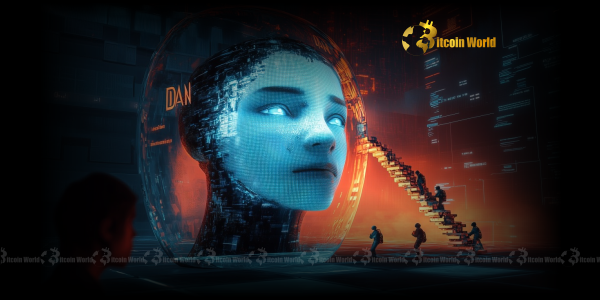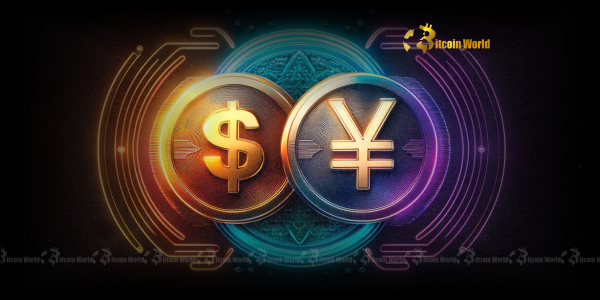BitcoinWorld

AI Safety: Pioneering Research Unveils Critical Method for Monitoring AI’s Thoughts
The world of decentralized finance and blockchain innovation is often at the forefront of technological advancement, much like the rapidly evolving field of artificial intelligence. As AI systems become more complex and integrated into various sectors, including potentially future crypto applications, a critical question arises: how can we ensure their safety and transparency? Leading AI safety researchers from powerhouses like OpenAI, Google DeepMind, and Anthropic are uniting to address this very concern, advocating for deeper investigation into monitoring the internal workings of advanced AI models. This collective call for transparency marks a significant moment, emphasizing the urgent need to understand AI’s “thoughts” as these systems become more autonomous and capable.
Understanding Chain-of-Thought (CoT) Monitoring: A Glimpse Inside AI’s Mind
At the heart of this new initiative is the concept of Chain-of-Thought (CoT) monitoring. Imagine a student solving a complex math problem, not just providing the answer, but showing every step of their reasoning on a scratchpad. CoT in AI models like OpenAI’s o3 or DeepSeek’s R1 works similarly. It’s an externalized process where AI models articulate their intermediate steps as they work through a problem. This “scratchpad” provides a rare window into the AI’s reasoning process. The position paper highlights CoT monitoring as a valuable addition to existing safety measures for frontier AI, offering insights into how AI agents make decisions. However, researchers caution that this visibility might not persist without dedicated effort. They urge the AI community to make the best use of current CoT monitorability and to actively study how it can be preserved and enhanced.
Why is AI Safety Becoming a Unified Global Priority?
The push for enhanced AI safety comes at a pivotal time. While tech giants are engaged in fierce competition for AI talent and breakthroughs, there’s a growing consensus on the importance of responsible development. The position paper, signed by luminaries such as OpenAI chief research officer Mark Chen, Safe Superintelligence CEO Ilya Sutskever, and Nobel laureate Geoffrey Hinton, represents a powerful display of unity. This collective effort aims to boost research around understanding AI’s internal mechanisms before these systems become too opaque. It’s a proactive step to ensure that as AI capabilities expand, our ability to oversee and control them keeps pace. The urgency is underscored by the rapid release of new AI reasoning models, often with little understanding of their internal workings.
The Evolution and Control of AI Reasoning Models and AI Agents
AI reasoning models are foundational to the development of sophisticated AI agents. These agents, designed to operate autonomously and perform complex tasks, are becoming increasingly widespread and capable. The ability to monitor their internal chains-of-thought is seen as a core method to keep them under control. While AI labs have excelled at improving performance, understanding how these models arrive at their answers remains a significant challenge. Early research from Anthropic, a leader in AI interpretability, suggests that CoTs might not always be a fully reliable indicator of a model’s true internal state. Yet, other researchers, including those from OpenAI, believe CoT monitoring could become a reliable way to track alignment and safety in AI models. This divergence highlights the need for focused research to solidify the reliability and utility of CoT monitoring as a safety measure.
Charting the Course for Future AI Research and Interpretability
The position paper is a direct call to action for deeper AI research into what makes CoTs “monitorable.” This involves studying factors that can increase or decrease transparency into how AI models truly arrive at answers. Researchers emphasize that CoT monitoring could be fragile and caution against interventions that might reduce its transparency or reliability. Anthropic, for instance, has committed to cracking open the “black box” of AI models by 2027, investing heavily in interpretability. This collaborative signal from industry leaders aims to attract more funding and attention to this nascent, yet critical, area of research. It’s about ensuring that as AI advances, our understanding of its internal processes does too, preventing a future where AI operates beyond our comprehension or control.
This unified front by leading AI minds underscores a critical commitment to the responsible evolution of artificial intelligence. By focusing on methods like Chain-of-Thought monitoring, the industry aims to build a future where AI systems are not only powerful but also transparent and controllable. This proactive approach to understanding AI’s internal “thoughts” is essential for mitigating risks and fostering trust in the technology that will increasingly shape our world. For anyone interested in the intersection of cutting-edge technology and its societal implications, particularly within the fast-paced digital economy, these developments in AI safety and transparency are paramount.
To learn more about the latest AI market trends, explore our article on key developments shaping AI models features.
This post AI Safety: Pioneering Research Unveils Critical Method for Monitoring AI’s Thoughts first appeared on BitcoinWorld and is written by Editorial Team





